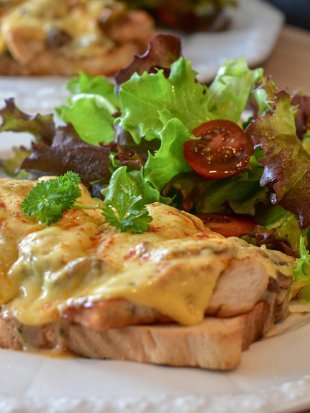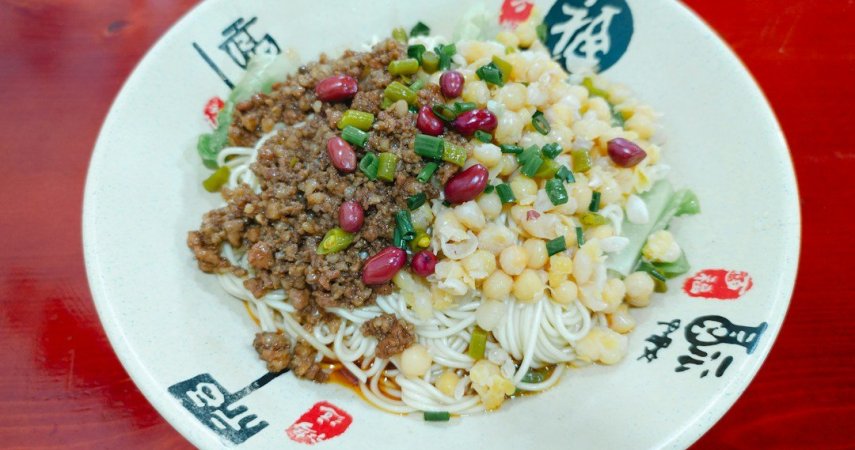Opis przepisu Chrupiące tortille to świetna przekąska na imprezę. Idealne na Nowy Rok, imprezę domową, urodziny czy imieniny. Raz...
Czytaj WięcejSernik nowojorski
Serniki nowojorskie są pyszne i kremowe. Smakuje i czuje się niesamowicie, gdy jest pieczony w kąpieli wodnej!
Przygotowałam sernik nowojorski na spodzie z maślanych ciasteczek i z warstwą kremu tostowego na wierzchu. Będziesz w stanie idealnie podążać za przepisem, ponieważ opisałam go bardzo szczegółowo. Jestem pewna, że będzie ci smakował od pierwszego kęsa.
Przepis na: Sernik nowojorski
Składniki:
Ciasteczkowy spód:
- Ciasteczka maślane 200 g
- 80 g Masło
Masa serowa
- 1 kg twarogu podwójnie mielonego, np. z wiaderka serka Philadelphia
- 200 g cukru
- 20 g cukru z wanilią
- 200 g gęstej śmietany 18
- 5 dużych jaj
- 1 łyżka stołowa skrobi ziemniaczanej
Wierzch:
- 400 g gęstej śmietany 18%
- 60 g cukru pudru
Zobacz także:
Jak zrobić serniki nowojorskie?
Krok 1
Sernik nowojorski będzie pieczony w kąpieli wodnej, więc najpierw przygotuj formę. Dno i boki tortownicy (o średnicy 24 cm) wysmarowałam lekko masłem i wyłożyłam pergaminem do pieczenia. Następnie przykryłam zewnętrzną część formy folią aluminiową, aby zapobiec przeciekaniu wody do sernika.
Krok 2
Ciasteczkowy spód
Blender ręczny do oprószenia ciasteczek (200 g). Roztopić 80 g masła i pozostawić do ostygnięcia. Miksować do uzyskania konsystencji mokrego piasku.
Krok 3
Umieść mieszankę ciasteczek na dnie formy (ja umieściłam ją również po bokach). Wstaw do lodówki na czas przygotowania masy serowej.
Krok 4
Masa serowa
Wszystkie składniki masy muszą być w temperaturze pokojowej! Należy je wyjąć z lodówki co najmniej dwie godziny wcześniej!
Do miski włożyć twaróg (1 kg), cukier (200 g), cukier z wanilią (20 g) i śmietanę (200 g). Miksować na średnich obrotach przez około minutę.
(adsbygoogle = window.adsbygoogle || []).push();
Krok 5
Dodajemy po jednym jajku (w sumie 5 jajek). Po dodaniu każdego jajka miksujemy je dosłownie przez 10 sekund.
Krok 6
Na końcu dodajemy skrobię (1 łyżka stołowa), ale nie jest to wymagany składnik. Mieszamy przez 10 sekund.
Krok 7
Wlej masę serową do tortownicy i wyrównaj wierzch.
Umieść tortownicę w większej formie z wodą (do połowy wysokości tortownicy z sernikiem).
Piec w kąpieli wodnej przez 40 minut w temperaturze 170 stopni. Następnie przez kolejne 40 minut w temperaturze 140 stopni. Nie otwieraj piekarnika podczas pieczenia.
Zamknąć piekarnik i studzić sernik przez 10 minut. Otwórz lekko drzwiczki i pozwól mu całkowicie ostygnąć w piekarniku.
(adsbygoogle = window.adsbygoogle || []).push();
Krok 8
Po ostygnięciu sernika możemy przystąpić do przygotowania kremu.
Krok 9
Góra:
Do przygotowania wierzchniej warstwy kremu potrzebne będzie 400 g schłodzonej gęstej śmietany 18% i 60 g cukru pudru.
Rozgrzej piekarnik do 180 stopni (grzanie górne i dolne).
Krok 10
Wierzchnią warstwę można również przygotować na dwa różne sposoby. Gęstą, dobrze schłodzoną śmietanę 18% i cukier puder miksujemy na wysokich obrotach przez 2-3 minuty, aż stanie się nieco rzadka. Należy jednak pamiętać, że nie ubije się ona tak dobrze jak klasyczna słodka śmietanka 30%. Będzie też mniej stabilna.
Jeśli chcesz uzyskać szybszą wersję, po prostu wymieszaj zagęszczoną śmietanę z cukrem pudrem za pomocą drewnianej łyżki.
Krok 11
Rozłóż śmietanę na wierzchu sernika. Piec w temperaturze 180 stopni przez 10 minut. Natychmiast wyjąć formę z piekarnika.
Wierzch ciasta posypałam jadalnymi płatkami róż.
Po ostygnięciu wstaw sernik nowojorski do lodówki na co najmniej 2-3 godziny.





